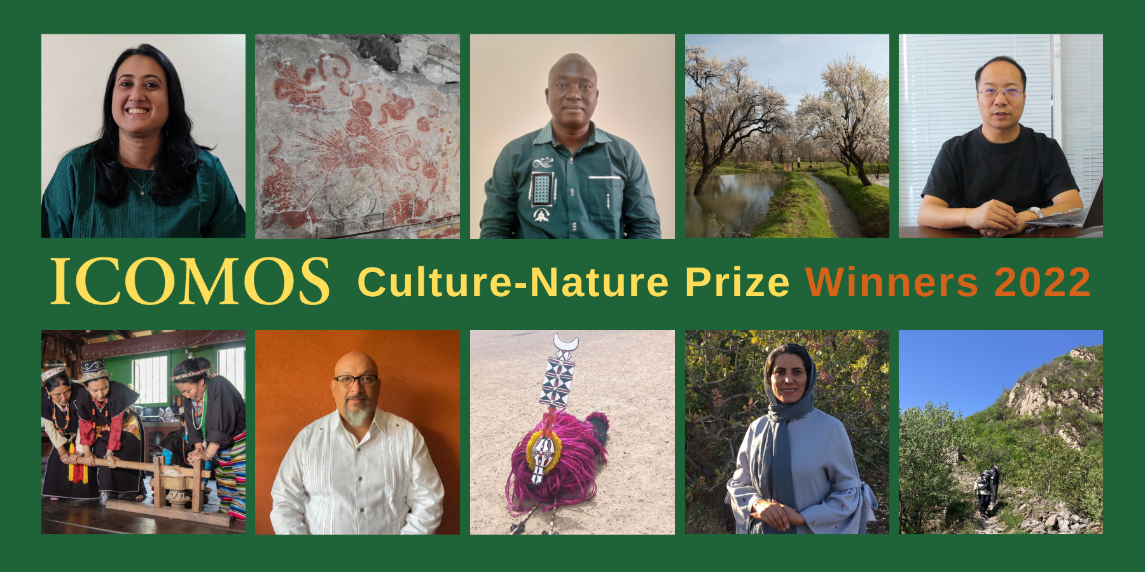
Culture-Nature initiatives recognise the interconnections between cultural and natural heritage and rethink how we can protect culture and nature through a comprehensive approach with local communities. Through integrated protection, management and sustainable development of our heritage places, Culture-Nature initiatives build resilience to today’s challenges of climate change, pollution and rapid urbanisation.
The prize will be given to a project under implementation, which addresses connections between culture and nature and makes a significant contribution to the heritage field in an innovative and effective way.ICOMOS members, Committees and Working Groups are eligible to apply.
Entries can be related to tangible or intangible heritage. Their scope can be ranging from small to large, from local to international.
The ICOMOS Culture-Nature Prize will honour up to 3 outstanding heritage initiatives.
The total prize money to be distributed to the winner(s) is €15.000 (fifteen thousand euros). Up to three prize winners will be selected.
After the 2022 ICOMOS Annual General Assembly, ICOMOS has the pleasure of announcing the 2022 winners of the ICOMOS Culture-Nature Prize, funded by your donations to our Giving Tuesday 2021 fundraising campaign.
This year, 5 outstanding Culture-Nature initiatives undertaken by our members have been awarded for their significant contributions to the heritage field in innovative and effective ways.
The Jury decided to award three Prizes and two Special Mentions.
Prize Winners:
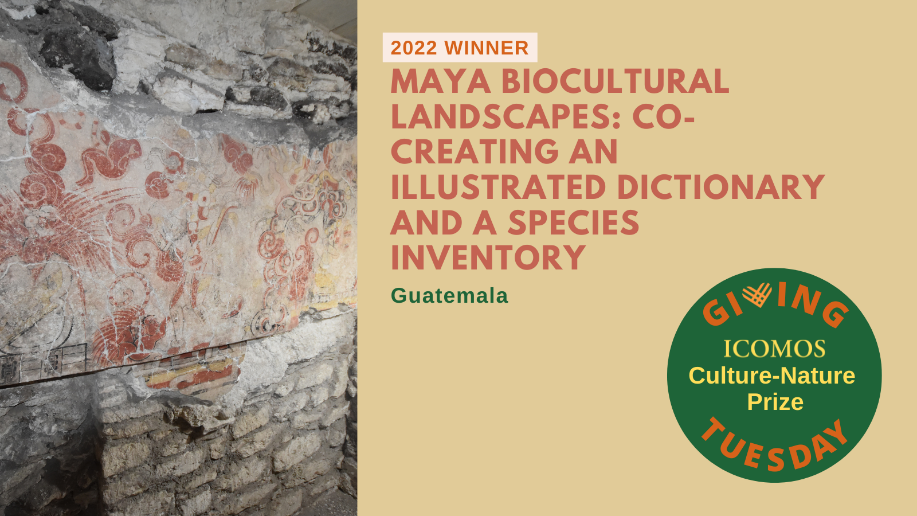
1st Place (6000€): Maya Biocultural Landscapes: Co-creating an Illustrated Dictionary and a Species Inventory, Guatemala
Deep in Guatemala’s Maya Biosphere Reserve, the San Bartolo murals, the oldest and most complex Maya artwork in situ, depict an origin mythology within an animate tropical forest landscape. The prize money will fund the creation of an illustrated dictionary of the murals’ biota and topographic features.
The murals at San Bartolo changed understanding of Maya history.
The artists and scribes of San Bartolo created masterpieces in paint, plaster, clay, and stone that provide a window into belief systems and socio-political changes in ancient Maya society. The rare preservation of multiple wall paintings at SBX dating from the 4th century BCE to the 8th century CE represent unique cultural patrimony and exceptional testimony of ancient Maya artistic works.
Seeking to understand the greater social dynamics of San Bartolo-Xultun during a time of initial settlement and growth in the Preclassic period, through social upheaval in the 2nd-3rd century CE, and as power was consolidated under dynastic rule during the Classic period. Through archaeology, we investigate the interplay between social systems, visual media, and ecology that unfolded at this lowland Maya city during the first millennium CE.
It will be paired with a “Species Inventory” from a 300 km2 area surrounding the site, interconnecting the tangible and dynamic natural world with complex ancient and contemporary beliefs, traditional knowledge systems, ethnolinguistics, and community histories. In addition, this will fund workshops with the Indigenous community.
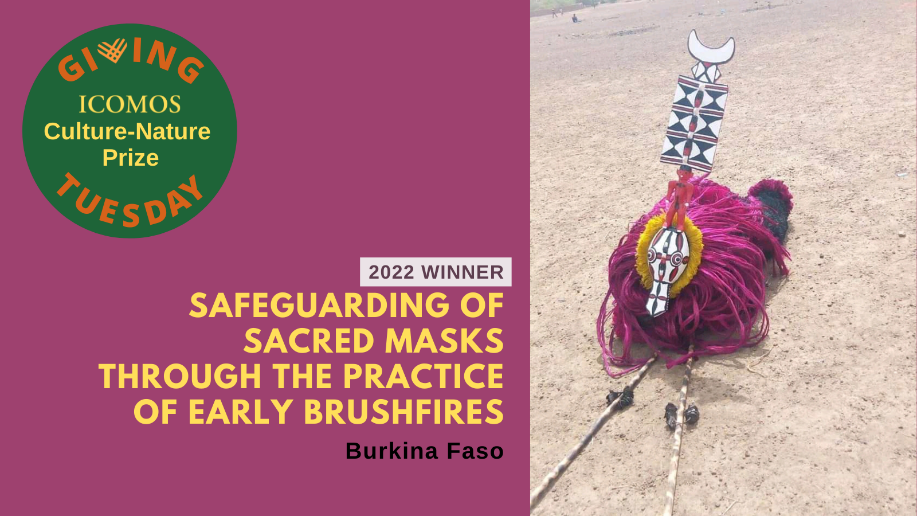
A trip to Burkina Faso is a dive into an incredible reality, full of ethnic groups and masks; in animistic cultures the masks are entrusted with the role of intermediaries, able to communicate directly with the Gods.
People build and fresco large fortified dwellings, the men take care of the construction of the buildings while the women deal with the finishing realizing large frescoes, using natural red, white and black pigments , on the ocher background of the clay walls; they are geometric designs that recall ancient traditional symbols.
Then we will witness the incredible spectacle of the dancing masks, polychrome masks representing animals, buffaloes, antelopes, monkeys, birds, in addition to the large flat mask of the butterfly, at least two meters long; all the masks embody the spirits of nature, to which fertility and health are asked and are thanked after the harvest.
Most of the population in Burkina Faso is still animist and the dance of masks is a moment of joy that marks the life of the fields, sowing and harvesting, village life, initiations, weddings and funerals.
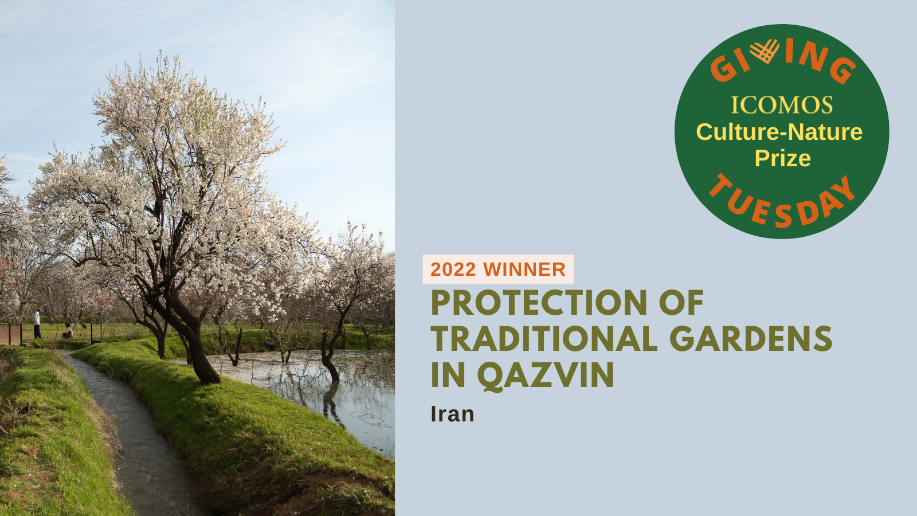
The traditional Qazvin gardens have a history dating back to ancient times and during this time, the garden complex has been formed around the city which, in addition to historical dating, is a defense shield against greenhouse gases and pollution.it is act as a green belt and respiratory system of Qazvin and people are dependent on it in both terms of environmental and culture.
The city of Qazvin always been threatened by floodwater in adjacent rivers. Due to their special design, these gardens have the ability to absorb the floods inside them, and because of their special design, the gardens have the ability to absorb the floods inside them, In addition to protecting the city, it has also been green and refreshing. In addition to the defensive role against the floodwater, it was the economic source and place of employment of the city’s population and had a considerable extent to the residential area of the city.
This initiative aims to protect traditional gardens in Qazvin, Iran. Team members consisting of representatives of associations active in areas related to the city's historic gardens will assist gardeners and farmers and inform the citizens about the garden’s cultural assets by holding social, cultural and artistic events, in order to reduce the amount of intentional destruction of the gardens. The prize money will help raise awareness in order to establish a legal structure to continue an existing practice of community gardening.
Special mentions:
- 4th Place tie (2500€ each):

Namdapha, a National Park and Tiger Reserve, a true wilderness and enchanting beauty of lush green vegetation, impenetrable pristine and virgin forests covered an area of 1985.23 square kilometres having diverse flora and fauna lies in the international border between India and Myanmar (Burma) within Changlang District in the state of Arunachal Pradesh in the northeast India. Namdapha National Park is located at a few kilometre away from Miao amidst misty blue hills along the turbulent Noa-Dihing river lies in the sprawling tropical rain forest. It was declared as Tiger Reserve by the Government in 1983.
The beautiful forests possess great biodiversity of Flora and Fauna. A details study of its species and genetic variation has not yet been thoroughly done. Namdapha is Botanist’s dream and it may take as long as 50 years to complete a comprehensive survey of its botanical resources. There are more than 150 timber species.
The indigenous communities living in the Namdapha National Park region of eastern Arunachal are advanced in terms of their education, biodiversity knowledge and cultural skills. Their traditional medicinal knowledge, weaving, basketry, and house-making skills reflect their self-sufficiency and coexistence with nature. The prize money will support the developement and the implementation of a curriculum for the transmission of their culture and traditions through classroom education and workshops in the local community school.
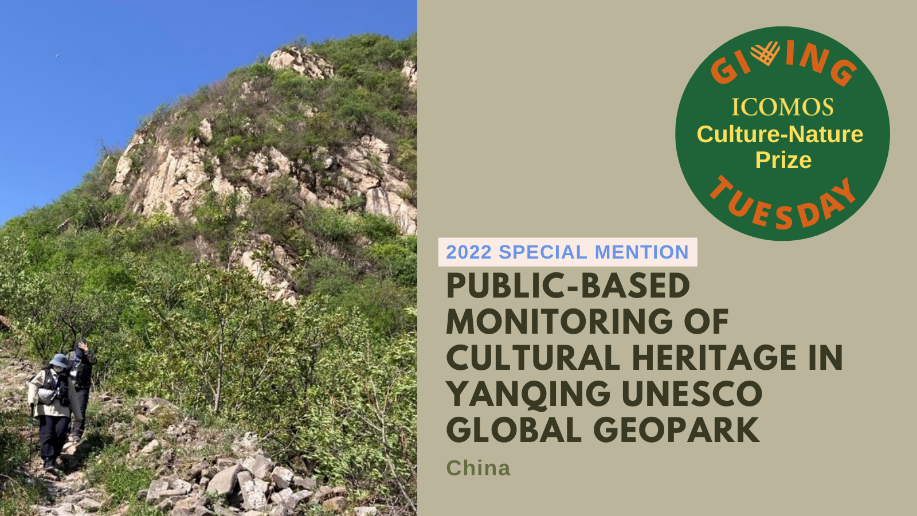
Yanqing UNESCO Global Geopark is located in the northwestern part of Beijing. The UNESCO Global Geopark is to the west and north of Changping, east of Mount Songshan, south of Chicheng of Hebei province. Based on geoheritage resources and distribution, Yanqing UNESCO Global Geopark is divided into four scenic areas: the Longqingxia and Guyaju Scenic Areas are in the west, the Qianjiadian Scenic Area in the east, and Badaling Scenic Area in the south.
Yanqing UNESCO Global Geopark has experienced a long geological history, and created abundant geoheritage sites. On the bedding planes of thousand-meter carbonate rocks formed about 1.9 Ga to 0.8 billion years ago, there are various and complex ripple marks. It also has particular angle unconformity in the geologic history; as well as the various intrusive rocks, extrusive rocks and many contact relations formed in the different stages of Yanshanian movement; furthermore, there are large-scale piedmont fault, nearly vertical strata, huge dome, anticline and magnificient monoclinal structures formed in Yanshanian movement. In addition, the flourishing plants and numerous dinosaurs lived during the period of Yanshanian movement have left abundant silicified woods and dinosaur footprints, according to these footprints, there were not only common meat-eating theropods, but also plant-eating sauropods, ankylosaurs and ornithopods living in the Geopark at that time, which are not discovered in adjacent regions. These dinosaur footprints have become the unique and precious geoheritage in the Geopark. Since the Cenozoic, the Yanshanian movement-induced dense faults and joints cut the exposed Meso- to Neoproterozoic carbonates into many blocks, the karstification has shaped these rocks into magnificent karst landforms, so the Geopark has become one of typical North-China-type karst landform sites in China.
This year, we are relying on your generosity again to help our members continue their inspiring work through the 2023 ICOMOS Culture-Nature Prize. Our goal is to raise another 15 000€ on Giving Tuesday 2022, 29 November 2022, to fund next year’s prize winners.
